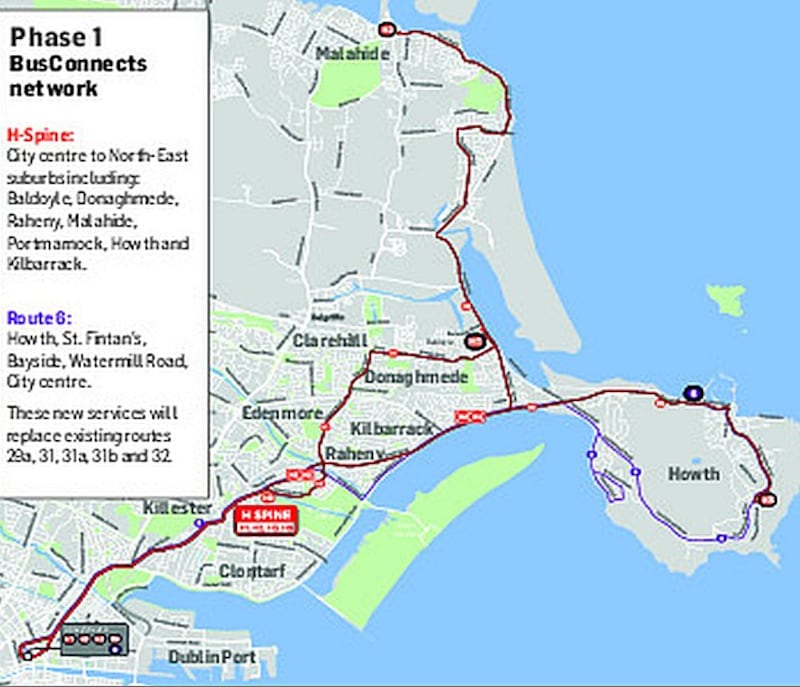The first services of the redesigned bus network for Dublin will begin operating from Howth and Malahide on Sunday.
The network redesign is part of the BusConnects programme, which also involves the construction of 16 continuous bus corridors and segregated cycle lanes across the city.
The redesign involves scrapping the current numbering system for all buses. A new lettering system from A to H will identify eight “spines” though the city, with buses running every four to eight minutes. Numbers would be used to indicate different branches of a spine.
There will also be 12 orbital routes (lettered O, N, S, W) providing connections between the suburbs, and links to rail, Luas and other bus routes. As well as the spines and orbital routes there are additional city-bound routes (1-99), peak-only routes (P) and express routes (X) and local routes (L).

The H-spine, running from the city to the north coast, will be the first of the new services introduced. While all H buses from Lower Abbey Street will run down North Strand and through Fairview, there will be a split at Raheny with H1 buses heading to Baldoyle, H2s serving Portmarnock and Malahide and H3s going to Sutton and Howth.
In addition Howth will have a city-bound route, the number 6, which takes the scenic route from Howth harbour, up to the summit and around Howth head, before meeting up with the H3 at Sutton Cross. The new routes will replace the 29a, 31, 31a, 31b and 32 buses.
Next phases
The next set of new services will be the C-spine, which will be introduced from October, with buses running from Sandymount and Ringsend to Lucan and south Kildare, through the city centre. Next year will see a concentration on the orbital routes starting in January with the northside orbitals, followed by the western and then southern orbitals. The G-spine from Liffey Valley and Red Cow to the docklands via the city centre will also be introduced next year. The remaining routes will be rolled out over 2023 and 2024.
Separately, the National Transport Authority (NTA) intends to lodge an application to An Bord Pleanála in October for the 16 bus corridors, the major infrastructural element of the BusConnects project.
The construction of the 230km of bus priority lanes, which would require the felling of more than 3,000 trees and acquisition of part of 726 front gardens, is scheduled to begin on a phased basis from next year, with each route taking about two years to complete.
While the number of gardens affected by the scheme has been reduced from 776, more trees will be cut down, a total of 3,050 up from 2,449. The NTA said the vast majority of “landmark, long-term and established mature trees” would be kept, and there would be an extensive replanting programme.








